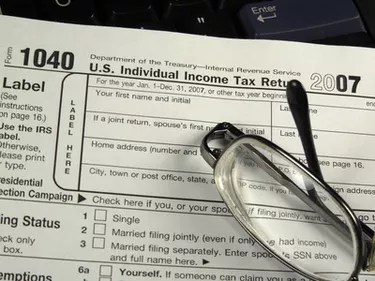
You've been saving diligently in your 401(k), but what happens when you need access to the money for emergencies? Financial institutions have rules about this, and if you have a Fidelity 401(k), you need to understand the Fidelity 401k terms of withdrawal for hardships. It is possible to get money out, but there may be fees for doing so.
Fidelity 401(k) Terms of Withdrawal Hardship
Video of the Day
According to the writers for Kasasa, the IRS specifies that 401(k) account holders must wait until age 59½ to withdraw money without incurring penalties. That early withdrawal penalty is 10 percent. Plus, you will have to pay income tax on the money. Even when the money is taken out after the age of 59½, it will be considered taxable income. Once you turn 70, the IRS requires 401(k) account holders to take distributions from their funds every year.
Video of the Day
While employers provide 401(k) accounts, individuals can start IRAs on their own. Traditional IRAs let you invest pre-tax income that grows tax-deferred. Roth IRAs do not require account holders to pay taxes on money put in or money taken out after they reach retirement age. Early IRA withdrawals incur those same penalties, however.
Many investors have faced hard times over the past year, and the Fidelity hardship withdrawal could be an option. To get started with this, you would need to complete a Fidelity Hardship Withdrawal Form. This form can be found right on the Fidelity website, and you can fill it out online or print it. Keep in mind, though, that you may still have to pay fees and taxes.
Fidelity Hardship Withdrawal Proof
Fidelity Hardship Withdrawals let account owners take out money to meet a "dire financial need." These include tuition and educational expenses, some medical expenses, funeral/burial expenses and purchasing a principal residence. Other acceptable categories are payments needed to prevent an eviction or foreclosure, or expenses to repair damages to the employee's place of residence.
You should read the employer's plan carefully before filling out the Fidelity form to be sure your circumstances will qualify for a hardship exemption. Depending on your employer, there could also be limits to the amount of money you can withdraw. You may be able to avoid penalties for certain kinds of withdrawals, such as separation from service after age 55 and the account owner's permanent disability. You'll still have to pay taxes, though.
A hardship withdrawal might require plan sponsor approval and documentation of the hardship, like pay stubs or medical bills. This depends on the individual application, but you can contact your advisor first to inquire. They may also suggest that you get the money from another source in order to avoid the penalties. You could consider speaking with a representative at your bank about various loans that might be helpful.
What Are My Other Options?
Fidelity's website shows that IRA distributions work differently, since employers are not involved. An IRA owner may be able to avoid the 10 percent penalty for unreimbursed medical expenses that are more than 10 percent of your adjusted gross income, higher education expenses, health insurance premiums while unemployed and first-time home purchase (up to $10,000).
A 401(k) loan could be an even better option. It allows account holders to withdraw the needed funds without any penalties or taxes. The money can be paid back and allowed to grow. These loans must be paid back within five years, plus interest. Still, that interest goes back into the 401(k). It is also essential to know that you cannot contribute to a Fidelity 401(k) for six months after making a hardship withdrawal.
Consider also: What Is a Hardship Loan?